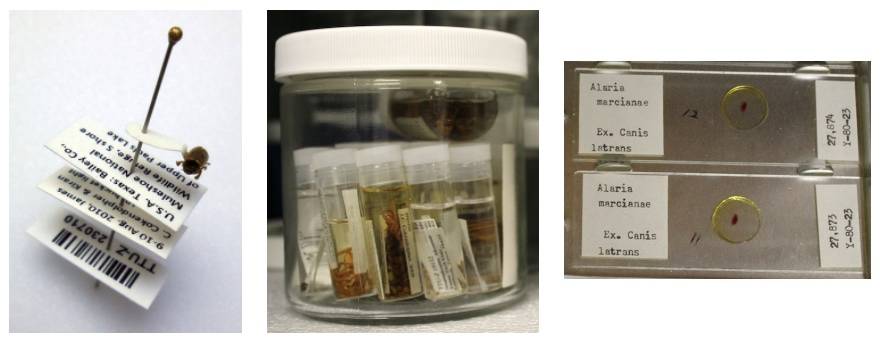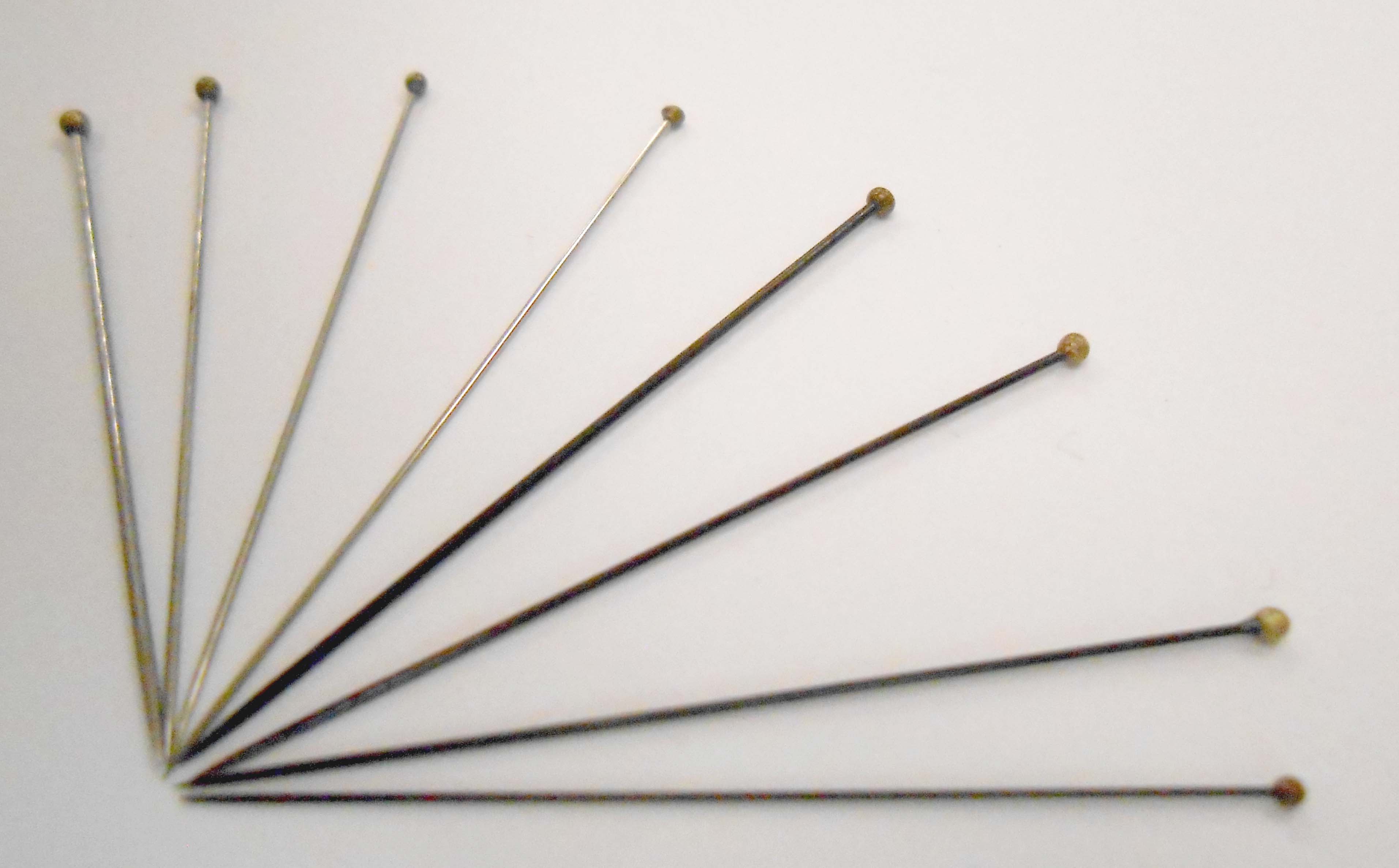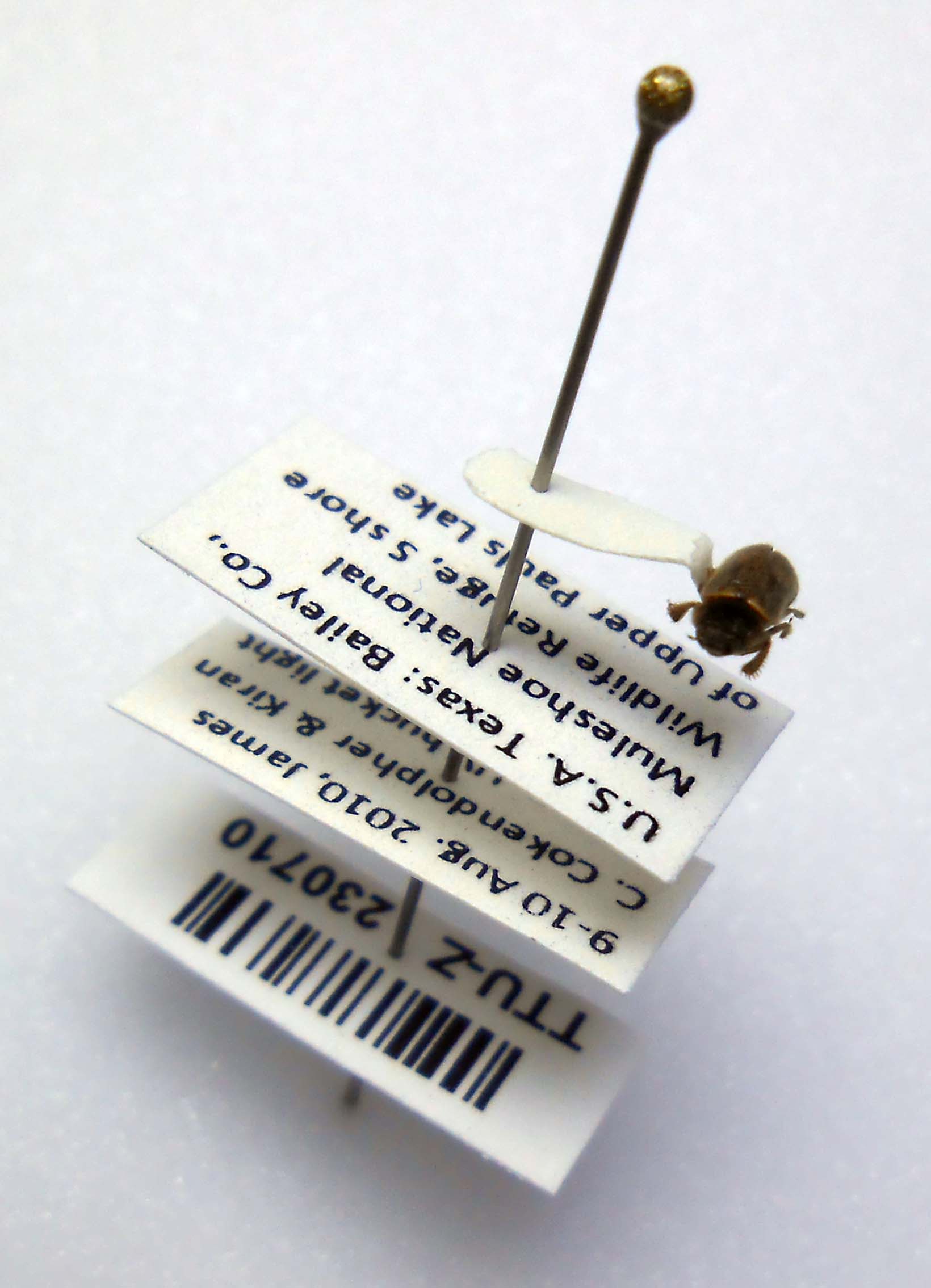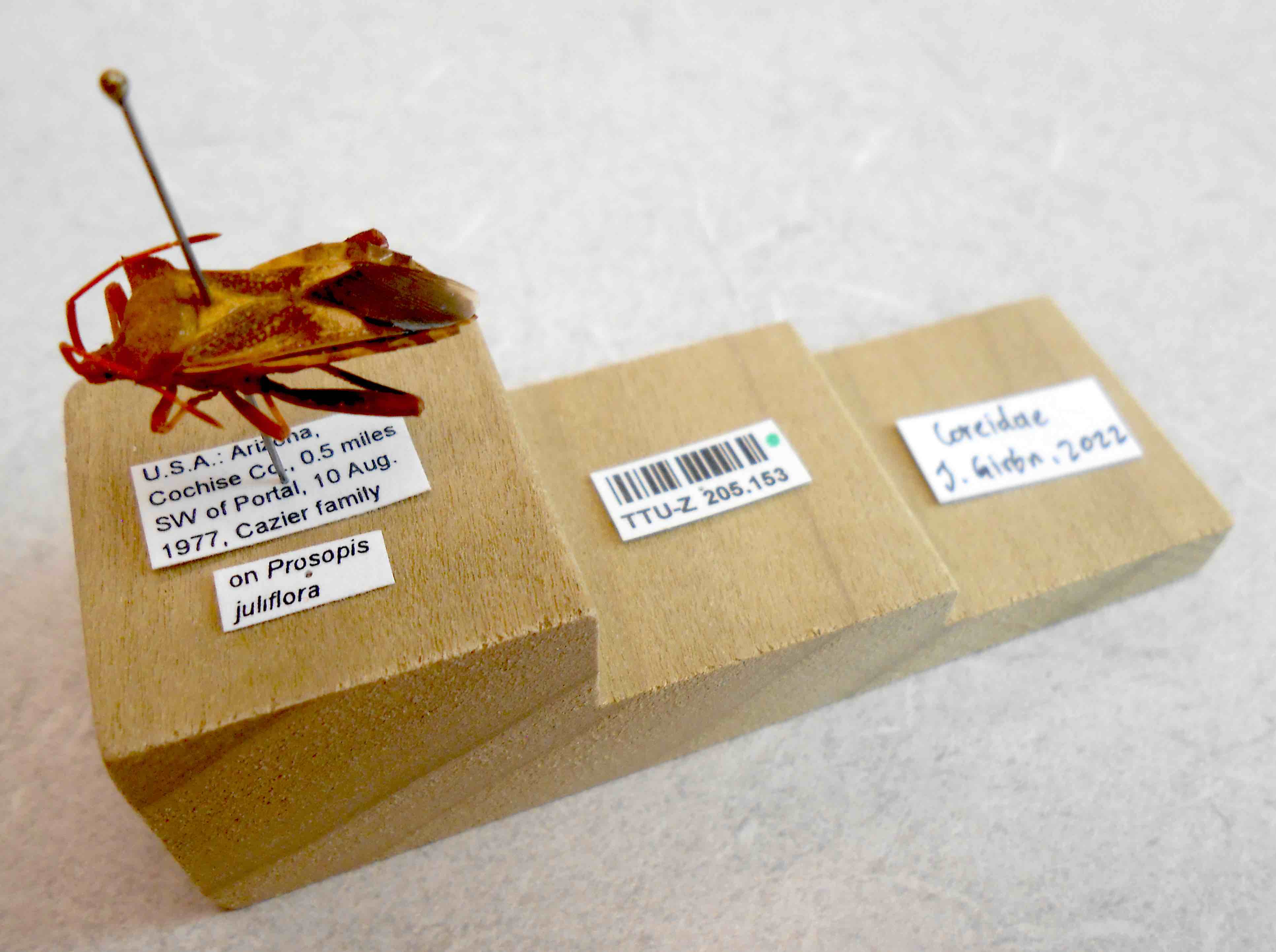Curatorial basics
The Invertebrate Zoology Collection (TTU-Z) houses specimens that are prepared in different ways:
- Most insects are mounted dry either by pinning or point-mounting.
- Arachnids (spiders, scorpions and other 8-leggeed creatures) as well as immature insects and a few insect groups (thrips, fleas, lice, and others) are preserved in ethanol. This one is the easiest preservation method. Just make sure that your samples/specimens have locality/date information. Be sure to use appropriate (alcohol resistant) paper and ink for labels and appropriate, archival jars and lids.
- Microscope slides are prepared for small organisms including mites, some insects, and other invertebrates including endoparasites. There are specific protocols to prepare specimens in microscope slides since they need to be cleared (made almost translucent).

Considerations when preparing insects
There are several things to think about when preparing insect specimens for deposit in a collection:
 Pins: Entomological pins come in different sizes and materials. The choice of material
is important depending on where your specimens will be stored. If there is a high
relative humidity, it is better to use stainless steel pins. If humidity is not an
issue, enameled pins work just fine.
Pins: Entomological pins come in different sizes and materials. The choice of material
is important depending on where your specimens will be stored. If there is a high
relative humidity, it is better to use stainless steel pins. If humidity is not an
issue, enameled pins work just fine.
 Regarding pin size, the smaller the insect, the smaller the pin you should use. For
insects smaller than 1 cm it is recommended not to pin them directly (as this might
destroy structures that are useful for identification), but point-mount them: glue
them on a pinned piece of pre-cut cardstock. For this kind of mount, #2 or #3 pins
are recommended. There are specialized point punches to cut the piece of paper into the right shape and size. Here is a video demonstrating the best way to point-mount a small specimen.
Regarding pin size, the smaller the insect, the smaller the pin you should use. For
insects smaller than 1 cm it is recommended not to pin them directly (as this might
destroy structures that are useful for identification), but point-mount them: glue
them on a pinned piece of pre-cut cardstock. For this kind of mount, #2 or #3 pins
are recommended. There are specialized point punches to cut the piece of paper into the right shape and size. Here is a video demonstrating the best way to point-mount a small specimen.
One of the considerations when using very fine pins (#1, #0 or smaller) is that they are more flexible and might wobble when piercing through labels, especially when labels are made of plastic materials.
- Labels: There are three kinds of labels that must accompany every single specimen in a collection:

-
- Locality labels: It can be one to two labels (sometimes there are more) indicating where and when the specimen was collected, along with who collected it. The information presented in these labels must be as accurate and complete as possible. They can contain habitat, substrate, and/or host information. These usually go right below the pinned specimen.
- Specimen number: It provides a unique identifier for each specimen in a collection. This identifier is usually composed of the collection acronym and a series of numbers. In our case, our identifiers look like: TTU-Z_123456, with "TTU-Z_" representing the acronym, followed by a six-digit number. These are also known as catalog numbers. This number allows for linking the information on the labels with a record in a database. Many collections use a barcode or QR code with this unique identifier so that the numbers can be read quickly by using a barcode reader.
- Identification labels: They provide taxonomic information. Ideally, each specimen in a collection should have one identification label with the name of the genus or species that it represents, although, in most collections, most specimens are identified only to order or family level. There can be more than one identification label. These should be placed right below the barcode labels. If there are more than one identfication labels, the one on top should be the most current ID for the specimen.
Considerations when organizing specimens
There are aspects of aesthetics, order, practicality, and space that need to be considered when curating an entomological collection.
- General organization of a collection: In general, collections are organized by taxonomic group. Within entomological collections, different insect orders are kept together. Within orders, organization can be either taxonomic or alphabetical, with alphabetical order being more practical.
Additional Resources
- Back to overview of the Collection
- Background and History of the Collection
- Insect Exhibit: Tiny and Mighty Creatures
- People
- Opportunities
- Our specimens in publications
- Our specimen database via ecdysis
- Our specimen database via GBIF
- Documenting Invertebrates around the Museum using iNaturalist
- Guide to commonly observed invertebrates at the Lubbock Lake Landmark
Natural Science Research Laboratory
-
Address
Museum of Texas Tech University, 3301 4th street, Lubbock, TX 79409 -
Phone
806.742.2486 -
Email
nsrl.museum@ttu.edu
